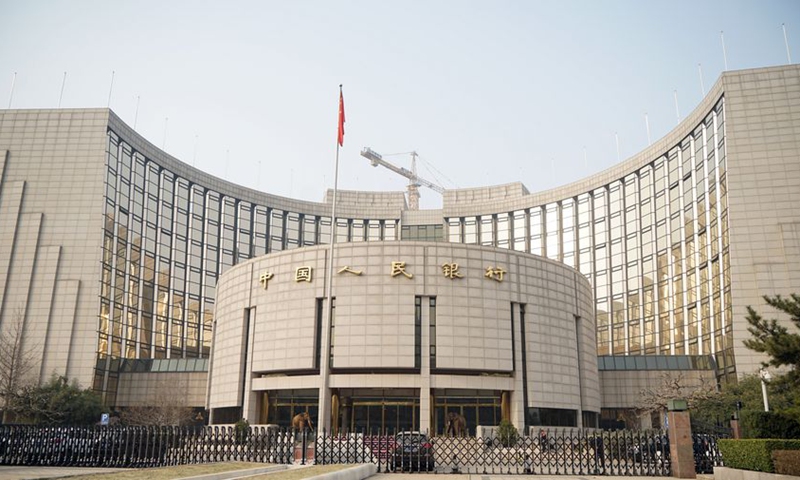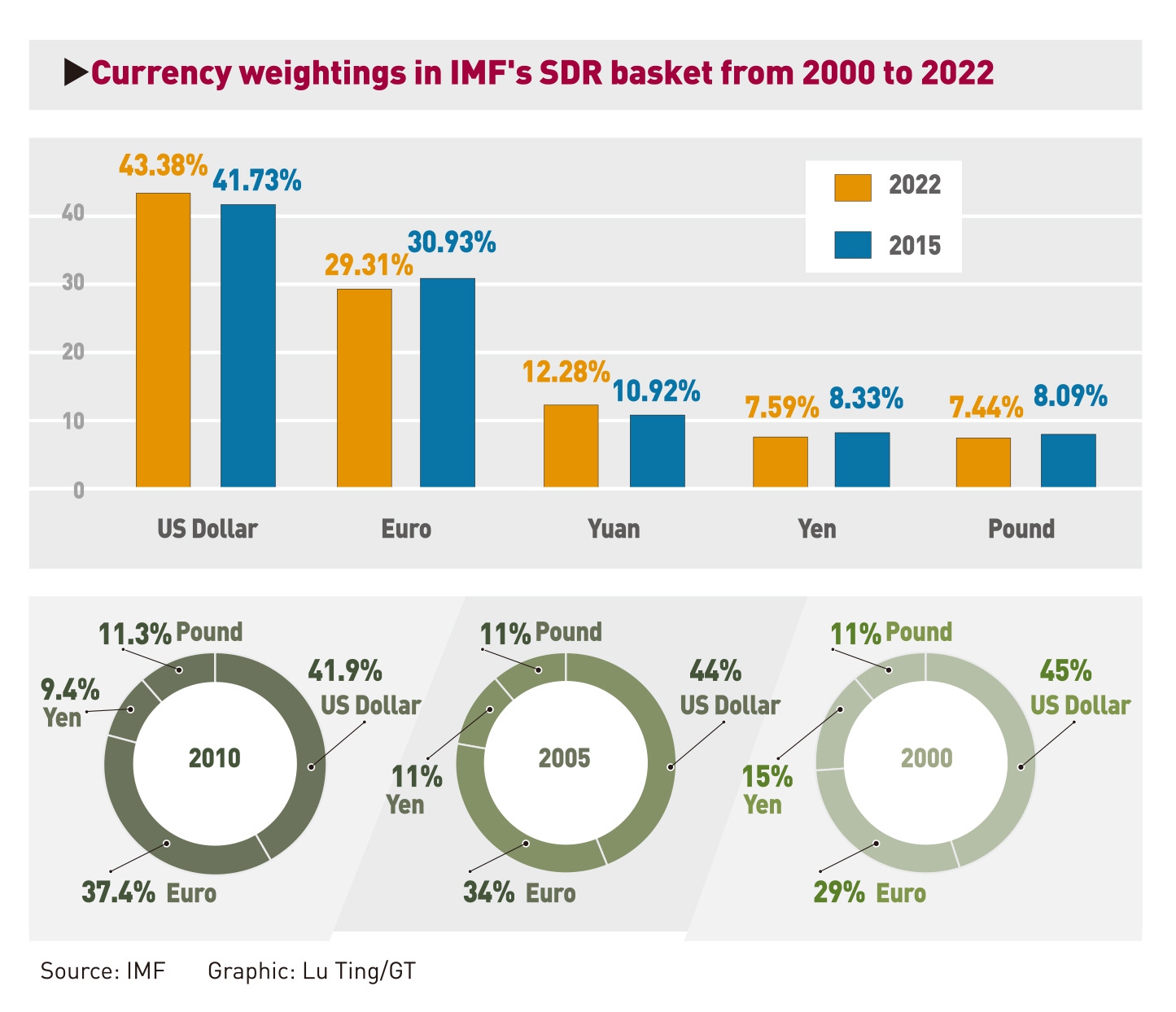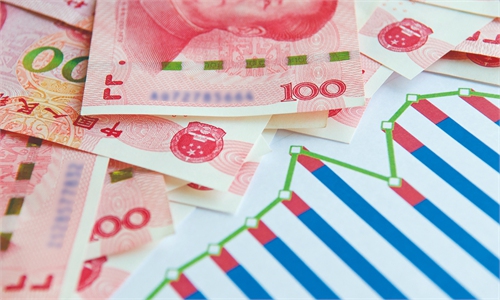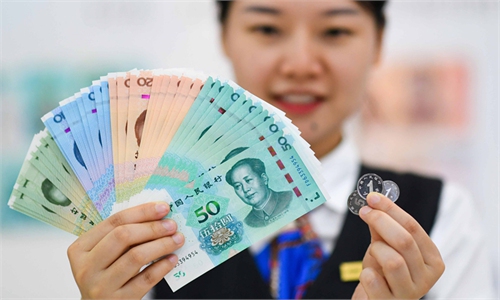
Photo shows the headquarters of the People's Bank of China. File photo: Xinhua
The IMF lifted the Chinese yuan's weighting in the Special Drawing Rights (SDR) currency basket to 12.28 percent from 10.92 percent in its first regular review of the SDR valuation since the Chinese currency was included in the basket in 2016, the People's Bank of China (PBC), the country's central bank, said in a statement on Sunday, in a major show of growing global recognition of the Chinese currency and the Chinese economy.
As China further steps up efforts to promote the internationalization of the yuan and the opening up of its financial market, the Chinese currency is expected to play a rising role in global payments, settlements and foreign exchange reserves over the long term, Chinese experts told the Global Times, following the IMF's move.
The updated basket implies slightly higher weightings for the US dollar and the yuan, and somewhat lower weightings for the British pound, the euro and the yen, the IMF said.
The weighting of the US dollar was also raised to 43.38 percent from 41.73 percent. The yuan's weighting remains in third place after the US dollar and euro.
The adjusted weightings came after the IMF Executive Board concluded its quinquennial SDR valuation review. The updated basket weights will come into effect on August 1 this year, with the next SDR review scheduled be concluded before the end of July 2027, according to the IMF.
The last SDR valuation review was concluded in 2015. Under the existing SDR valuation method adopted by the IMF Executive Board, the currency basket is reviewed every five years unless developments in the interim justify an earlier review.
"Directors broadly acknowledged the progress made on financial market reforms in China, while calling for additional efforts to further open and deepen the onshore yuan market, with some directors also stressing the need to further enhance data transparency," said the IMF.
The PBC said in the statement that it will work with other financial departments to continue unswervingly promoting reform and the opening up of China's financial markets, and to simplify the procedures for foreign investors to invest in the Chinese market, enrich the range of investable assets, strengthen data disclosure, and improve the business environment.
"We will continuously improve the convenience of investing in the Chinese market, creating a more favorable environment for foreign investors and international institutions," the central bank said.

Currency weightings in IMF's SDR basket from 2000 to 2022.Graphic:GT
The SDR is an international reserve asset created by the IMF in 1969 to supplement its member countries' official reserves. On October 1, 2016, the IMF added the yuan to the basket of currencies that make up the SDR, a milestone in the integration of the Chinese economy into the global financial system.
The IMF's move came as the yuan has acted as a stabilizer during recent global volatility amid the impacts of COVID-19, the Russia-Ukraine conflict and high inflation, experts said.
The yuan's raised weighting will enhance the role of the Chinese currency in global markets and further accelerate its internationalization, said Dong Dengxin, director of the Finance and Securities Institute of the Wuhan University of Science and Technology.
The weight of the yuan in the SDR basket still has a lot of room for improvement, and it is expected to increase steadily, as the currency's role in global payments and settlements, foreign exchange reserves, investment and financing becomes more and more important, Dong told the Global Times on Sunday.
As of the end of 2021, the yuan was fifth in the Currency Composition of Official Foreign Exchange Reserves (COFER) after the US dollar, the euro, the yen and the pound, according to the IMF data.
Guan Tao, chief global economist at BOC International (China) Co and a former senior official at the State Administration of Foreign Exchange, told the Global Times on Sunday that the yuan's higher weighting in the SDR basket mainly reflected the increase of China's exports, including goods and services, foreign exchange reserves held in yuan-denominated assets and foreign exchange transactions using the Chinese currency in the global markets over the past few years.
There are two criteria - export and freely usable - that guide IMF decisions on the weighting of currencies in the basket. In terms of exports, Guan said that China's contribution to the world's trade, especially during the past two years under the disruptions of the COVID-19 pandemic, showed a stellar performance, reflecting the strong resilience of the country's supply and industrial chains.
China's total trade topped $6 trillion for the first time in 2021, as the country, a global forerunner in containing COVID-19, continued to see solid recovery over the past year.
The Chinese currency retained its spot as the fifth most attractive currency for global payments by value in January but with a larger share as a global payment currency, according to SWIFT, the global provider of financial messaging services.



